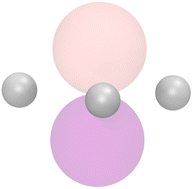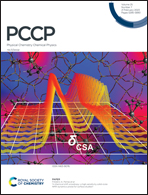Emergence of Linnett's “double quartets” from a model of “Lewis dots”†
Abstract
Chemists routinely explicate molecular structures and chemical reactions in terms of the propensities of semiclassical valence electrons (aka “Lewis dots”). Typically, the electrons are viewed as forming spin pairs and recent efforts to translate this concise and intuitive qualitative picture into an efficient and relatable quantitative model have made good progress. But electrons are not always paired and advanced quantum calculations have shown that this is so even in small diamagnetic species such as dicarbon and benzene. Here we show that the latest semiclassical model for paired electrons can clarify the limitations on pairing simply by dissecting the elements of the interparticle potentials. Although not trained to do so, these elements produce a Linnett-like benzene, with three valence electrons in each CC bond, when the electrons are free to move singly. At the same time, sustaining higher order bonds with independently mobile electrons requires adjustments in the details of the model potentials at short distances. This is addressed with new training data and new forms for the contributions from Coulomb integrals. Although trained on hydrogen and carbon species separately, the combination applied to ethyne predicts the pairing of spins in the CH bonds and the dispersion of spins in the CC bond that is found in ab initio calculations. This adjusted force field is named LINNETT, in appreciation of Linnett's insightful double quartet interpretation of the Lewis octet.

- This article is part of the themed collection: 2023 PCCP HOT Articles


 Please wait while we load your content...
Please wait while we load your content...